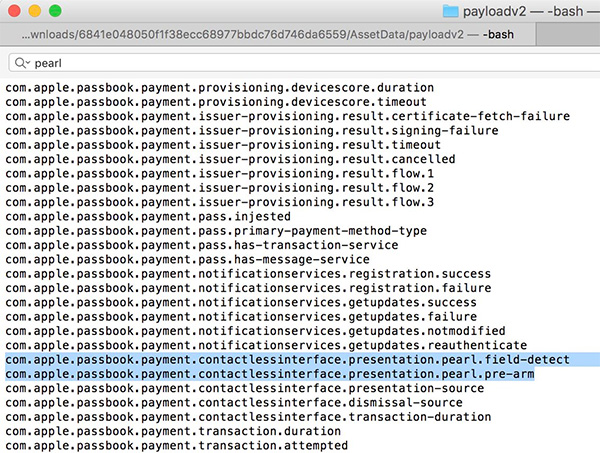It’s literally amazing what you can learn in such a short space of time about a new device. We’ve been privy to a lot of information over recent weeks about Apple’s speculated plans to remove Touch ID from iPhone 8 and replace it with facial recognition.
We’ve had no concrete confirmation on that, but investigations into the HomePod firmware not only suggest facial detection is coming, but that it will also be used as a replacement for Touch ID for confirming and authenticating Apple Pay payments.

It now seems that it’s the in thing to actually jump into the HomePod codebase and see what can be found. As mentioned earlier, investigations by a number of developers have not only revealed the fact that facial detection is coming with iPhone 8, but that Apple references the technology as Pearl ID (likely a codename for ‘Face ID’) in its code. With that in mind, we can now safely assume that any references to Pearl in the code are making explicit references to facial detection and, more specifically, point us in the right direction of how it will work and what it’s capable of.
iOS developer @r_idn is the latest individual to jump into the HomePod firmware and has pulled out two com.passbook.payment strings which he believes are entirely relevant to how Apple intends to handle payments on iPhone 8. The “pearl.field-detect” and “pearl.pre-arm” strings, when used in conjunction with the passbook reference suggests that Apple is planning on using Pearl ID, or facial recognition, as a replacement for Touch ID in order to validate and authenticate any Apple Pay payments for products and services.
Many end-users and analysts have been concerned about the potential removal of Touch ID and what that would actually mean for this type of process. Where payments are concerned, security is paramount, which means that Apple needs a system that’s at least as equally as secure as using a fingerprint. It’s been said that facial detection actually captures and analyzes more individual points than Touch ID, which in essence means it’s potentially more secure than the current solution. The jury is still out on this one.

Aside from that, it’s likely that the HomePod firmware will continue to be dissected in the coming weeks, so prepare for more leaks and more information being thrust into the public domain.
(Source: @r_idn [Twitter])
You may also like to check out:
- Samsung Galaxy Note 8 Specs Leaked In Full
- iOS 10.3.3 / 10.3.2 Jailbreak: Downgrade From Latest Firmware As Jailbreak Is Possible On iOS 10.3.2
- Download Hotspot Shield++ IPA Of VPN App On iOS 10 [No Jailbreak Required]
- SmartCamera iOS 11, iPhone 8 Feature To Auto-Adjust Camera Settings Based On Scene
- Download iOS 10.3.3 Final IPSW Links For iPhone, iPad, iPod touch
- Jailbreak iOS 10.3.3 / 10.3.2 / 10.3.1 / 10.3 For iPhone And iPad [Latest Status Update]
- Download iOS 11 Beta 4 & Install On iPhone 7, 7 Plus, 6s, 6, SE, 5s, iPad, iPod [Tutorial]
You can follow us on Twitter, add us to your circle on Google+ or like our Facebook page to keep yourself updated on all the latest from Microsoft, Google, Apple and the Web.

